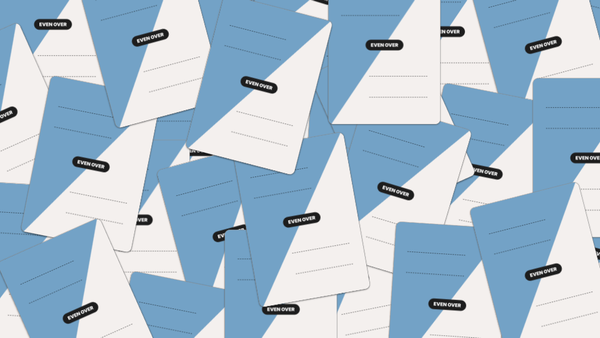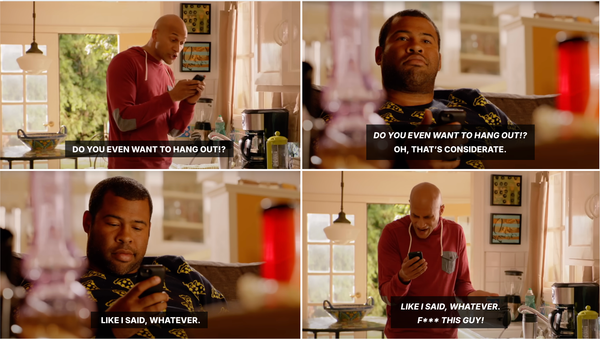Four New Organizational Structures for the AI Era
The final installment in our three-part series on the impact of AI on the marketing department.

In addition to directly re-writing the job descriptions that are under threat to emphasize growth, fulfillment and humanity, leaders can adopt new structures to solve the problems that AI will create.
I envision four new structures:
- Multi-tenure Teams, solving the talent drain
- AI Councils, keeping the business in line
- Platform Teams, bringing up the level
- Coaches, keeping the human side in touch
Let’s break ‘em down, one-by-one.

Multi-Tenure Teams
Solving the Talent Drain (and answering: “what do we do with “management”?)
Bad jobs for incoming top talent result in a weak long-term leadership succession plan. And as I’ve shown, AI will hollow-out the roles filled by new graduates. Those new grads are more likely to be power-users of AI tools, but they’ll be joining firms that don’t have much of a place for them: most of the more routine tasks that provide training opportunities for junior talent will be automated or handed over to a computer entirely. As a result, top talent simply won’t consider roles that don’t offer immediate access to intra/entrepreneurship, strategic leadership, and innovation.
In the early days of social media, we saw an uptick in reverse-mentorship, where junior employees coached senior executives on the digital revolution. Companies will need to go beyond mentorship and develop Multi-Tenure Teams, where new employees, senior executives, and middle managers break hierarchical boundaries to work as a cohesive team.
The result: new grads get better jobs; companies maintain their talent pipeline; tenured employees get a diffusion of knowledge from the younger generation.

The [Good]
AI Council
Keeping the Business
(and the Brain) In-Line
In the mid-aughts, companies struggled to write effective social media policies. Legal departments are still struggling to handle “Shadow IT,” the tendency for business units to acquire and use their own software systems outside of their company’s governance framework.
This issue will compound dramatically as generative AI explodes – and helps internal non-developers build their own tooling.
Companies will need markedly better governance forums than the ones they rely on today. Traditionally, governance focused solely on data integrity and security. In this age, there's an opportunity to create AI Councils that offer more holistic guidance, balancing business needs and ground truth.
To pull this off, AI Councils will need greater proximity to operations, with a greater number of Council members coming from more junior ranks (rather than Executives) and from operating units (rather than HQ). Further, they’ll need more inclusive, digital tools for vetting, deciding upon, and communicating new rules and regulations that go beyond MS Word, PowerPoint, and traditional intranets.

Platform Teams
Bringing up the floor,
and raising the ceiling
Generative AI tools will eliminate the idea that an entire function requires centralization.
Instead, we’ll see dedicated teams turning their skills into software. These Platform Teams will take functions like “Marketing Insights” and break them down into individual pieces, like “Concept Screener” (for assessing the validity of marketing ideas before they receive budget allocation) or “Audience Optimizer” (for improving a media plan’s targeting).
Every department I’ve observed has 5-10 human-intensive tasks that require intense, inter-team agreements to spin up, but are necessary to the proper functioning of the business. (I’ve observed that this administrative overhead consumes about 70% of a team’s available working time inside large organizations!) Platform Teams will turn these tasks into simple, digitized workflows requiring only a few clicks.
The end result? In the short term, distributed or decentralized teams can maintain high levels of quality and business alignment without administrative overhead. In the long term, these capability-as-a-service implementations will be a core differentiator for firms that had the guts to invest in them today.

Coaches
Keeping the Human Side in Touch
Like the previous structures, the Coach role isn’t 100% new. But with the changes to come, it will need to (and be able to!) expand to a first-class, insourced member of the firm. Coaches will be essential to bridging the gaps between people, forming and scaling high-performing teams, and developing the human side of the business.
I envision an increased emphasis for coaching in three key domains:
- Leadership Coaches. Focused on nurturing the leadership skills of the new workforce, ensuring a seamless transition into roles of responsibility and influence. Leadership coaches will guide individuals in decision-making, conflict resolution, and strategic planning, ensuring the cultivation of a robust leadership pipeline for the organization.
- Team Coaches. Focused not just on inter- and intra-team dynamics, Team Coaches will lean into the relationship between AI tools and human teams. They will work on enhancing collaboration, communication, and problem-solving skills, ensuring that the human-team-AI integration in teams is smooth and productive.
- Skill Coaches. Focused on the continuous development of technical and soft skills, they will ensure that the workforce stays abreast with the evolving technological landscape, and also maintains the human touch in their interactions and operations.
As we enter an era where the research tells us that many roles are replaceable, the role of coaches will be irreplaceable – and probably powered by a knowledge and coachee database that allows fewer coaches to work with more of the workforce.
Wrapping Up
For leaders, this is not the time to adopt a “wait and see” approach. Generative AI is already actively in use across the corporate world, from approved and intentional approaches like Bain’s OpenAI alliance and Expedia’s ChatGPT integration, to grassroots applications at the edges of the firm. And these tools are already driving labor disputes, like the recently concluded months-long Writer’s Strike.
There are pessimistic views of the impact of this new technology on our workforce, ranging from minimal returns on investment to drastic job loss. I take a different view. I hope we’ll land in a future where AI has helped us build dramatically more productive workplaces, and where it has helped us elevate the human side of work.
But as with any new technology, the future we get relies on the decisions we make.
Let’s dig in.




